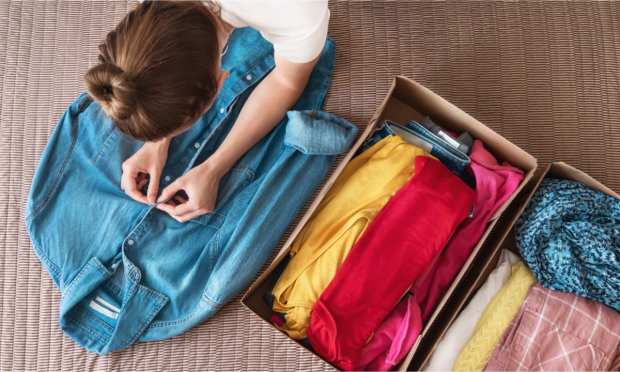ThredUP’s Resale Market Projections Spell More Trouble For Department Stores

The secondhand market is ready to explode, according to a report released Wednesday (June 23) by thredUP and GlobalData, with resale alone expected to grow 11 times faster than the broader retail clothing sector over the next five years.
The $36 billion secondhand market — $15 billion of which is resale and $21 billion of which is traditional thrift and donation — is expected to reach $77 billion by 2025. Approximately $47 billion of that is projected to be in resale, which thredUP defines as the sector of secondhand that includes “more curated assortments.”
The company is also projecting huge leaps in who is reselling clothing. Over 52 million people resold clothing in 2020, with over 36 million being first-time sellers, and with 76 percent of people who have never resold clothing open to the idea, thredUP says there are almost 119 million anticipated future resellers.
Good news for the secondhand market, however, looks like bad news for department stores and mid-priced specialty retailers, such as Gap and J.Crew, that have already been struggling for years. Whereas department stores currently hold 11 percent of consumers’ closet share, that is expected to drop to 7 percent by 2030 — less than half the share department stores held in 2010, according to the thredUP and GlobalData report.
Similarly, mid-priced retailers that held 25 percent of consumers’ closets in 2010 are projected to have only a 13 percent share by 2030. Meanwhile, the resale market is expected to double its closet share, from 9 percent to 18 percent.
“We are in the early stages of a radical transformation in retail,” said James Reinhart, co-founder and CEO of thredUP, in a statement.
Fueling Change
Part of the growth, Reinhart said, is prioritization of sustainability by consumers — a trend that other retailers have realized is too big to ignore. One in three consumers say they care more about sustainability now than they did before the pandemic, ThredUP and GlobalData found, and 51 percent are more opposed to eco waste.
Buying a used item, thredUP said, displaces 17.4 pounds of CO2 emissions and reduces the item’s carbon footprint by 82 percent.
Another related factor is the COVID-19 pandemic, which prompted 33 million consumers to buy secondhand apparel for the first time in 2020. And unlike other pandemic habits, such as wearing pajamas all day, this one is expected to stick: 76 percent of those first-time buyers plan to increase their secondhand spending in the next five years.
Since 2016, the percentage of women who have bought or are open to buying secondhand products has increased from 45 percent to 87 percent in 2020.
Opportunity For Everyone
The forecast is good news for thredUP competitors in the reCommerce space, and especially good news for Etsy, which earlier this month said it will pay $1.6 billion to acquire 10-year-old resale marketplace Depop.
Other big apparel brands getting into the resale market include Lululemon, Levi’s, Patagonia, Eileen Fisher and REI, which are among the brands currently partnered with secondhand marketplace manager Trove to run their resale operations for them. Nike also launched an in-house refurbished program in April, and Rent the Runway now allows customers to rent and purchase outfits without a membership fee ahead of a rumored $1 billion initial public offering.
Even in a market that is increasingly crowded, Reinhart told investors last month he’s confident that thredUP’s ability to scale up will help it succeed.
“None of these brands are really at the point where they’re taking the channel seriously from a scale perspective,” he said, leaving room for thredUP to expand its “Resale-as-a-Service” platform for retailers, as 60 percent of retailers are open to offering secondhand items to their customers.
“We’re still in the early days of our RaaS model and our brand partner strategy, but we see opportunity for growth and meaningful high-margin revenue over time,” Reinhart said.
